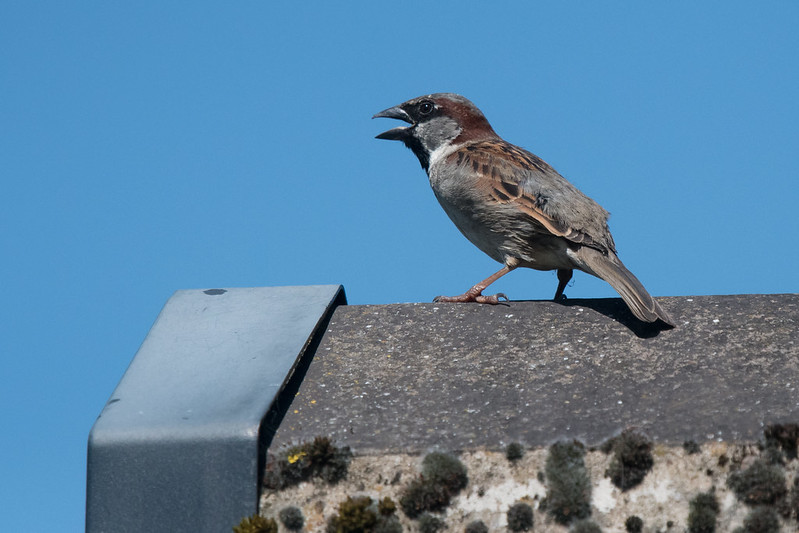
The song of the House Sparrow seems to be pretty much like its call – cheep! But you can see a male House Sparrow, sitting by a nest box or opening on the edge of a roof, going ‘cheep!’ time after time after time. If it were any other bird then we’d call it a song – so let’s call it a song.
House Sparrows have been taken, by humankind, all over the world, and so this song, or call, is readily heard in the streets of New York as in the streets of London – indeed Central Park, New York is a much better place to see and hear House Sparrows than St James’s Park, London. House Sparrows were released in Brooklyn in 1851 and that’s when Americans, many of whom were immigrants from Europe of course, first heard ‘cheep!’. After those eight pairs were released and following other releases elsewhere the House Sparrow spread right across the USA from sea to shining sea as though this were its manifest destiny.
So let’s have an eclectic selection of House Sparow songs from all around the world (although they all sound much the same) starting with New York, USA;
…and Western Cape, South Africa:
…and Assam, India;
…and our own Rainham Marshes RSPB nature reserve, Essex, UK;
Cheep! You can travel round the world and hear House Sparrows at many airports, railways stations, ports or filling stations where you pause your journey.
[registration_form]
Cheeping squabbling Sparrows , the background to so much else, always there, dismissed and taken for granted, until you realise you don’t have any.
My previous house, where i lived for 25 years, was only a mile from a small hamlet with sparrows plentiful round old buildings and livestock, yet i never saw one at home,( the same was true of Collared Dove), it makes you wonder how they spread so far.
Thankfully we now have a good number , and i can hear them outside, even with the washing machine on.
Years ago, there used to be a couple of guys in St. James Park in London selling small bags of seed to tourists so that they could hold out an arm and get a handful of sparrows!
Simple, yet perhaps deceptively so when as a musician, I’m trying to note it down. So as not to disturb them in their hedgey hideaways, I was counting their numbers by ear, until I realised what I assumed was several birds was just one.
Kind of like Tibetan chanting monks, who can intone several notes (very audibly) at once, a single House Sparrow makes its own audio camouflage of several high frequency sounds at once, so it somehow sounds like a whole flock of birds. I assume this is to make predators think twice!
In summer, due to lockdown etc, from our conservatory I was recording a very long practice track for a student, with three beats in a bar. A good exercise for me to improve my timekeeping! I swore the sparrow in our hedge began to synchronise its chirrups in time with me. Since then I’ve been trying to look for patterns and I wonder if there’s any meaning to the pulse of their chirrups. Sometimes it’s quite regular, enough to satisfy the keenest drummer or bassist, then there will be an unexpected short break inserted here and there, which makes the whole song depart from conventional music.
Natalie – thank you for a lovely comment